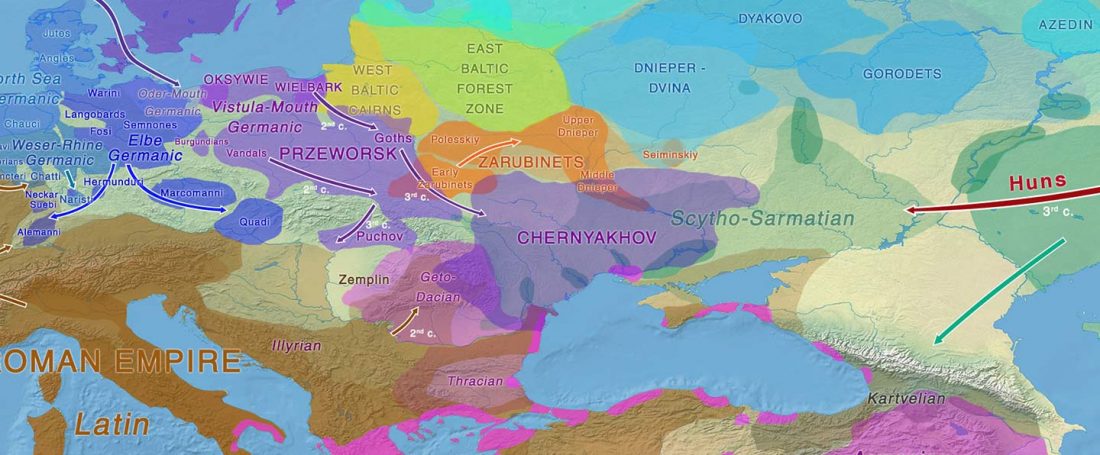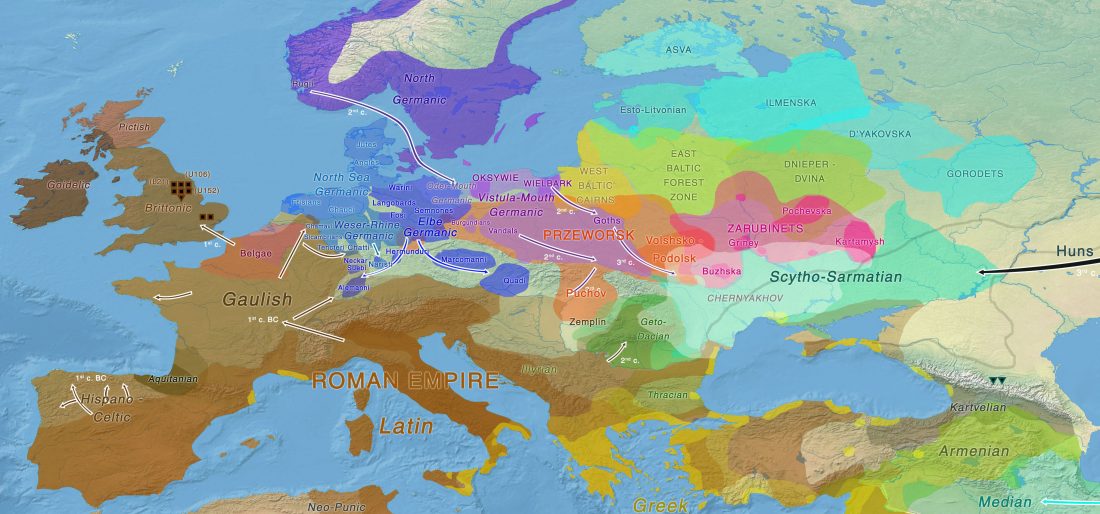A recently published abstract for an upcoming chapter about Early Slavs shows the generalized view among modern researchers that Common Slavs did not spread explosively from the east, an idea proper of 19th-century Romantic views about ancestral tribes of pure peoples showing continuity since time immemorial.
Migrations and language shifts as components of the Slavic spread, by Lindstedt and Salmela, In: Language contact and the early Slavs, Eds. Tomáš Klír, Vít Boček, Universitätsverlag Winter (2019):
The rapid spread of the Proto-Slavic language in the second half of the first millennium CE was long explained by the … Read the rest ““Dinaric I2a” and the expansion of Common Slavs from East-Central Europe”

